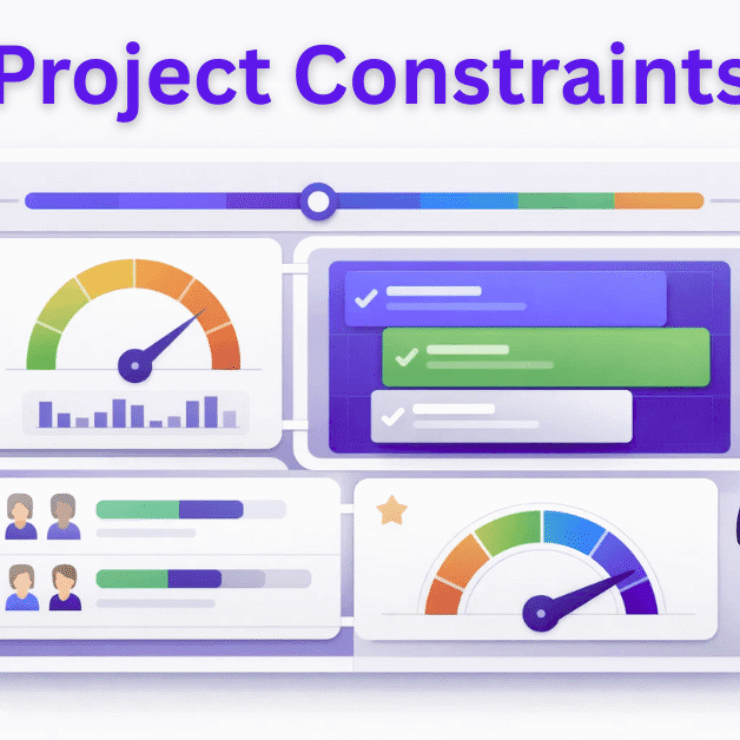Introduction
In today’s competitive business world, productivity has become an important factor in deciding the success of every business. When employees are productive and motivated, attaining the desired business objectives will be much easier. Well, this is not something that will remain constant all the time. However, a decreasing trend of productivity is not a good sign for any organization. Besides, this could be a sign of some underlying problems.
There are different aspects that influence employee productivity. For instance, poor work environment or improper management of time. Today in this blog, we have mentioned 14 important factors influencing productivity so that you can get a clear idea about it. Besides, we have also listed some tips to boost productivity for long-term growth. But let us first understand employee productivity and its importance for an organization.
Employee Productivity and Its Importance
A productive employee shows better engagement and can complete the task on time and efficiently. Better employee engagement means employees are enthusiastic and dedicated to their work. They can go beyond their job roles to help their organizations to attain success.
Employee productivity is generally measured by how effectively and efficiently employees are utilizing their resources and time. Improving productivity can greatly influence the bottom line of a company. Wondering how? Well, it can reduce costs, boost output, and enhance customer satisfaction. Here are some major benefits of maintaining employee productivity in an organization.
Better Customer Service
Productive employees can complete their tasks on time and focus more on providing customers with better services. Besides, they will be able to resolve customer queries and complaints quickly. This, in turn, can boost customer satisfaction.
Effective Collaboration
Productive employees will contribute to the organization equally. While working as a team, they will establish robust relationships. It can boost collaboration among team members.
Better Employee Engagement
Motivated employees are also the most engaged employees in a company. They always remain committed to the values, mission, and vision of the company. Furthermore, they support a positive work culture and are more likely to participate during meetings and offer help to other employees.
Enhanced Business Outcomes
With productive employees, businesses will have better outcomes, such as increased profitability, higher revenue, more market share., etc. A major reason behind this can be the effective accomplishment of business goals, which is possible when you have a motivated and productive employee.
All these points clearly show why businesses should consider employee productivity seriously. Now, let’s talk about the major factors that affect productivity in operations management so that you can take the right steps to improve productivity.
14 Factors affecting productivity and engagement at work
Work Culture
The culture and values of an organization can clearly influence the motivation and, subsequently, productivity of employees. Discrimination, bullying, and harassment in the workplace can lead to a toxic work culture. This can damage employee morale. A healthy and positive work culture can offer employees different opportunities to grow and share opinions for the betterment of the organization. Companies with positive cultures witness around 65 percent lower employee turnover rates and around 17 percent boost in overall productivity.
Team amalgamation
Well, it may sound strange, but team amalgamation or merger can also affect employee productivity. For example, differences in decision-making methods, multiple leadership styles, and work expectations can lead to a culture clash. On the contrary, healthy competition with new team members can also positively affect the work mood. All these things may hinder the productivity of employees.
Physical Health
Undoubtedly, mental and physical health can impact an employee’s productivity. Employees suffering from chronic illness may not be able to focus on work and may remain absent from work. Besides, health issues can also cause frequent employee burnout. So, companies should have different wellness programs to support employee health in the workplace. As studies have said that companies with appropriate wellness programs faces 25% less sick leaves from employees.
Skill Enhancement
Employee training and skill enhancement is an important productivity factor. This shows how efficiently they can handle a task. The more skilled they are, the better they will perform. An unskilled employee may not understand the task properly. They will use the trial-and-use method and any exertion they need. Besides, this can also lead to increased errors. That’s why organizations should organize different skill enhancement programs frequently to ensure better performance and productivity among employees.
Rewards and recognition
While rewards are an ideal way to keep employees motivated, when not designed properly, they negatively affect productivity. For instance, some employees may engage in illegal or unethical practices to get a reward. Besides, when rewards and recognitions are not well-aligned with the goals of a company, it can create a competitive environment, causing conflict among employees. If an employee doesn’t receive a reward, they may feel unworthy of the job, lowering morale.
Workload
While it is crucial for some tasks to get done in a day, excessive workload can cause stress and overwhelm your employees. When there is too much work to do within a short time, the chances of employee burnout will increase. They may make errors. So, unrealistic workloads are one of the major factors affecting productivity in operations management. It is crucial for managers to monitor workload properly. They should ensure a fair distribution of all tasks among employees to avoid workload.
Time and task management
Poor time management is another major reason behind decreased productivity among employees. Organizations may not be able to attain the desired goals if the team is spending more time on non-valuable tasks. As they spend more time on those tasks, there will be less time left for completing important tasks. With effective time and task management, employees can improve their focus, thus enhancing productivity.
Tools and Technology
Latest technologies help in enhancing the efficiency of employees but in some cases, they may drain their valuable time. This may lead to a lower productivity rate as well as frustration. Some ways modern tools can affect a team’s time include complicated UI, long onboarding process, constant malfunction or bugs, etc. On the other hand, the way one utilizes technology and tools can also affect productivity positively in the workplace.
Superior Guidance
Undoubtedly, superior guidance, whether from mentors, managers, or team leaders, also plays a major role in enhancing productivity. After all, employees do not quit companies; they quit bad leaders. Poor guidance from leaders will take a team in the wrong direction. Team leaders set clear goals for the team. They offer encouragement, recognize employees’ accomplishments, and create a positive work culture. All these factors lead to higher productivity among employees.
Colleague Conflicts
Conflicts are common in the workplace. However, managers should try to reduce the chances of conflicts among employees. It can damage the trust among employees. This, in turn, can affect team collaboration. Besides, conflicts lead to delays in project completion as employees divert their attention from primary tasks to resolve the issues.What’s more? Conflicts are a major reason behind a negative atmosphere. All these things severely affect productivity.
Workplace Ergonomics
Apart from different organizational aspects that affect employee productivity, factors like work environment settings also influence employee productivity. Settings such as lighting, design, furniture, and acoustic, affect employees’ health. If lighting conditions are not comfortable, employees may not be able to focus on their tasks. Creating a functional and comfortable workplace by reducing distractions can lead to increased productivity.
Earning models
Employees invest their skills and time in the organization to earn money. Feeling unfairly compensated can reduce satisfaction and employee engagement. Every organization should consider this thing seriously. An employee who is financially secure will feel motivated and may be less likely to change roles. Furthermore, it will encourage them to achieve better results. Competitive payments, better payroll management, on-time payments, etc., are important for both employees and organizations.
Work-life Harmony
Spending more hours on their job can cause job dissatisfaction and burnout. As a result, employees will become less productive. Furthermore, a poor work-life balance can increase the rate of turnover, costing a business a lot in recruiting new employees. That’s why it is crucial to offer flexible work schedules, suitable policies, and wellness programs to create a perfect work-life balance. With this, you will witness increased performance levels and satisfaction.
Goal setting
To be more productive, employees should have a better understanding of their objectives and goals. When goals are not clear, employees may not be able to prioritize their tasks. Moreover, when employees don’t know what they need to do, they may not feel motivated, and this can also affect their creativity. Let’s understand this with a simple example. A salesperson who knows the monthly target will be more productive compared to one who isn’t aware of the sales target.
Also Read:
100+ Powerful Affirmations to Stay Positive At Work
Best Employee Appreciation Quotes for Work
Strategies to improve productivity at work
Without a clear goal and plan for success, organizations may not be able to keep their employee’s productivity consistent. Here are some effective strategies that can help in improving productivity.
Implement productivity tools
Productivity tools are designed to streamline workflow while simplifying tasks. Besides, they come equipped with advanced and useful features using which employees can easily access required documents, track progress, and create charts with a few simple clicks. These tools also facilitate effective collaboration among teams. Some popular productivity tools one can use are Calendar, Slack, Google Docs, and Hubstaff.
Encourage breaks
In this fast-paced world, it is common for employees to find themselves trapped in a continuous work cycle. That’s why downtime or break is sometimes considered as an indulgence or a luxury. Organizations promoting downtime at the workplace help support mental health, boost creativity and lower the risk of burnout. After all, brains need rest to function better. Taking rest makes sure that employees are working at their optimal levels.
Foster positive environment
When employees feel comfortable and safe, they will love to give their best at work. And for that, organizations need to create a positive work environment. Such an environment focuses on employees’ physical and mental health, safety and growth. A company with a positive work environment suggests that they consider employees as humans, not machines. To create a positive environment, you need to set an effective onboarding process and focus on employees’ requirements. Don’t forget to reward employees for their contributions and performances. It would be better if you could offer career development and training opportunities.
Leverage technology
Technology plays a crucial role in improving productivity as well as efficiency. Using the right technology, multiple repetitive tasks can be automated. This can lower the chances of errors and speed up the entire process. Furthermore, there are tools like Karya Keeper that can enhance communication while promoting smooth collaboration between teams. The latest technology has made data analysis easier. With the help of machine learning and AI algorithms, businesses can make informed decisions that can boost productivity.
Conclusion
A company’s success greatly depends on its employees’ productivity. Without a productive workforce, it will become challenging to sustain in this competitive market. That’s why investing money and time in employee productivity makes sense. Make sure that you offer a positive environment to your employees. There should be well-established organizational principles to ensure job satisfaction. Evaluate the workforce regularly and adapt to changes in the requirements of employees to ensure consistent productivity. With a productive environment, attaining constant success will become easier.
FAQs
Can Work Environment Affect Productivity?
Yes, it can. If the environment is positive, comfortable and backed by a solid work culture, it can lower the stress, promoting productivity among employees.
What Are the Major Influential Factors in Employee Productivity?
Factors like work culture, workspace design, employee health, technology, etc., can affect productivity in a workplace.
How Can Communication Influence Productivity?
An effective communication in an organization will offer clear instructions, and employees know what they need to do. Besides, it improves accountability, increasing productivity.
How to Measure Productivity at the Workplace?
By considering the number of objectives met, work completed, time spent on each task and quality of work, organizations can measure their team’s productivity.



